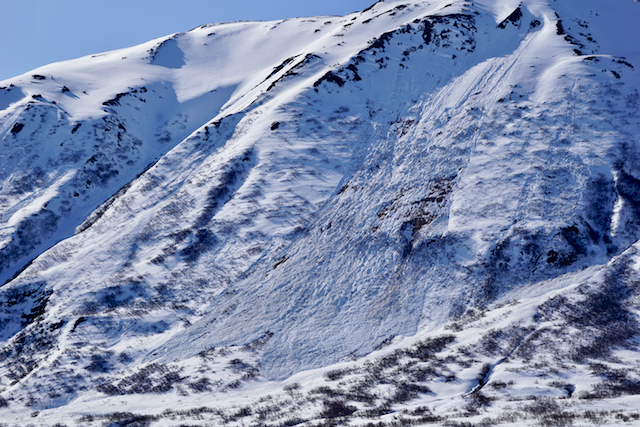The snowpack is heating up and beginning to slide off the mountain sides. Not everywhere, but the usual suspects have seen large wet avalanches over the past couple days, with the majority of the activity two days ago on Wednesday. Pyramid’s West face and the Southeast facing aspects of Seattle Ridge are these suspects and true to tradition, these slopes have seen the majority of the action. Although we have likely gone through the peak of acitivity for this first ‘warm-up’, any steep slope with a more shallow snowpack and baking in the sun is a concern for a naturally occurring large wet avalanche.
For those headed out today, and this weekend, timing is everything. This morning, it’s likely that the wet surface snow has undergone a fairly solid re-freeze and the avalanche danger is LOW. As the day heats up and the crusts melt and lose strength, the danger rises. This is when wet avalanches can begin to release, either naturally or by a person. Remember solar noon is around 2pm so the snowpack is the warmest, and most dangerous, from ~1pm till ~5pm. Once snow becomes wet and ‘mushy’ up to you boot top, or your track starts trenching in wet snow, it’s time to head to a more supportable surface. Even a small wet avalanche can turn into something larger in bigger terrain.
Photo below is on one example of the many large wet loose/wet slab avalanches on the Southeast face of Seattle Ridge occurring Wednesday.

Wider angle view of Seattle Ridge and the many large wet avalanches from Wednesday.

Large wet loose slides from Tuesday on the East face of Pyramid.

The West face of Pyramid continues to shed its snowcover as the days go by. Note the slabs on the lower looker’s left of photo – these occurred sometime Wednesday evening/Thurs morning.

–




